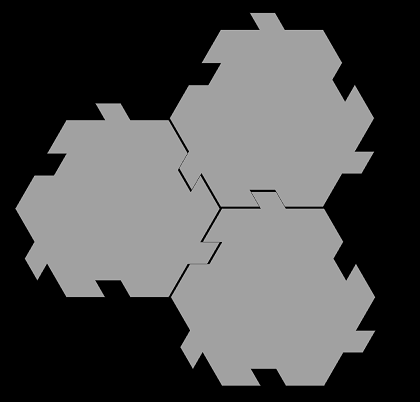Assume you have a jigsaw puzzle that is also a tessellation. This means every piece has an identical shape and can be assembled into a 2D pattern that fills the plane with no gaps. Such a jigsaw puzzle might look like this:
Or, by a weak definition, even this:
Now most people don’t recognize that triangle grid to be a “jigsaw puzzle” because none of the pieces are interlocking. Before anybody starts trying to create a definition for what geometries constitute “interlocking”, let’s take a look at a third example:
You will first note that any two adjacent pieces do not actually lock together, they can be simply slid together or apart. Now look at the red “fault line” I drew in the overall pattern. If I try to separate the puzzle along that line, you will notice that pieces zig-zag enough where they are locked together and won’t move apart. You can, however, still pull this puzzle apart.
The teaser question:
How can you pull apart the above puzzle? The pieces must stay on the plane (or table, I suppose) and for sake of simplicity, let's just assume there is one piece in the center and it has 6 adjacent neighbors
But the real question is:
Can you design a single shape that satisfies the following:
It can be tessellated (cover an infinite plane with no gaps)
Any two adjacent pieces are not interlocking by themselves
By assembling some number of pieces together (beyond two), the pieces become interlocking and thus cannot be slid apart in any way
This is intended to be a real-life question, but the math needs to check out too.
ALSO: I used CAD software when I designed this problem. I'm assuming most of you don't have that, so I'll try and help people out by providing feedback. More than once I thought I had a good idea that didn't pan out so don't feel bad if I tell you you're wrong. Have fun!
This question has been answered by @Florian F but there are other approaches that could solve it. I came up with two and neither were like that one. I'll maybe post mine eventually but for now anybody can keep trying. (I've added the open-ended tag)










 ]
]

